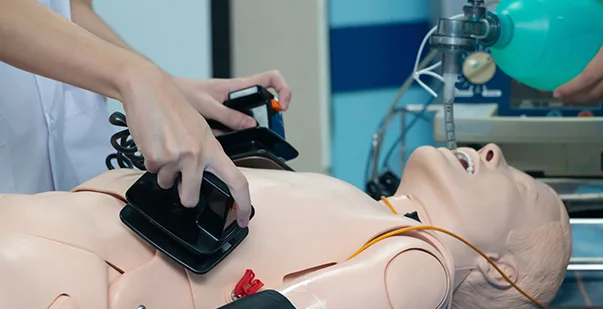Agonal breathing or agonal respirators are medical terms that describe insufficient breathing, which often sounds like snorting, snoring, and labored breathing. The suffering person appears to be choking or has an involuntary gasp reflex. Agonal breathing is not true breathing and indicates that someone is suffering from a severe medical emergency, such as cardiac arrest.
When an individual starts agonizing, it is crucial to take them directly to the hospital or receive prompt treatment. The breaths are characterized by an irregular and gasping nature that reflects severe respiratory compromise. Keep reading to explore more about agonal breathing, its symptoms, and its causes. The topic is an imperative step towards preparing for potential medical emergencies.
What are the symptoms of agonal breathing?
Agonal breathing can last up to a few years and may consist of only a few breaths. Gurgling sounds or snoring may follow, and here are a few symptoms of agonal respiration:
- Irregular Agonal Gasps and Labored Breaths: Struggling to breathe is when you have sporadic and irregular gasping, often looking like deep sighs. This strange breathing pattern shows a weakened way of breathing.
- Reduction in Respiratory Rate: People having trouble breathing usually see a big drop in their usual breaths. Each breath becomes difficult to take, prompting quick action.
- Distinctive Snoring or Gurgling Sounds: When someone struggles to breathe and makes unusual snoring respiration or gurgling sounds, it’s called agonal breathing. This shows a possible blockage of the airway and needs quick help.
- Abnormal Breathing Pattern: Instead of normal breaths, agonal breathing makes it difficult to breathe normally. This might mean stopping breaths for a moment and not breathing evenly, showing the severity of the problem.
What are the causes of agonal breathing?
Agonal breathing is a distressing symptom that may arise from several critical medical conditions. Moreover, anything can cause it, which cuts off the blood supply to the brain. It is most likely to occur in the following situations:
- Cardiac Arrest: A heart attack stops the heart from moving blood with oxygen. This makes breathing difficult because organs aren’t getting enough air supply.
- Traumatic brain injuries: Brain injuries or brain damage can cause gasping breath by messing with how the brain controls breathing, resulting in uneven and short breaths.
- Hypoxia: When someone doesn’t get enough oxygen, they start to breathe really deeply. This is the body trying to help by taking in more air and making it easier for them without so much breathlessness.
- Neurological Disorders: Conditions that affect the brain’s centers for controlling breathing can cause agonal breathing. This happens because normal control mechanisms don’t work right, making someone breathe irregularly from time to time.
What to do during agonal breathing?
Agonal breathing is a critical emergency that needs immediate intervention. Here are a few essential steps to follow during irregular gasping breaths:
- Call for Emergency Assistance: Call your local emergency number (like 911) right away. Speedy expert help is crucial in dangerous life situations.
- Check for responsiveness: Shake the person gently and yell loudly to see if they can hear you. If they don’t answer, it might mean they are not awake and need help from a doctor right away.
- Initiate CPR (cardiopulmonary resuscitation): If the person does not respond and is not breathing or is just gasping, start CPR. Begin by pushing on the chest 100–120 times per minute. Let the chest go back to normal after each push.
- Use an Automated External Defibrillator (AED) if available: If there is an AED nearby, use it as told by its directions. AEDs can check heartbeats and give electric shocks if needed, possibly getting the heart to beat normally again.
- Maintain an open airway: Make sure the person’s airway is open by moving their head back and lifting up their chin. This facilitates better airflow.
- Administer Rescue Breaths (if trained): If you know CPR, give rescue breaths after doing 30 compressions. Make sure your chest moves up clearly when you breathe in.
- Continue CPR until professional help arrives: Keep doing CPR until an emergency health team comes or the person starts to breathe on their own again, becomes responsive, or shows signs of being alive. Prompt action during agonal breathing raises the chance of living. Getting help from a doctor and starting CPR right away is crucial during these hard times.
Read More: CPR AED Course in Oakville
When to seek help and treatment?
If someone struggles with their breath, they are showing signs of a really bad health problem. They will need quick help right away.
If a person starts to gasp for air, the person accompanying them should call emergency services right away. Let the person in charge know how you are feeling and explain if anyone is struggling to breathe or gasping. Treating agonal breathing right away is very important.
When someone has a heart attack, they usually bend or fall down. If this happens, do chest compressions on the person until help comes from paramedics. If you don’t know how to do CPR, ask the person on the phone for instructions on what to do.
Sometimes, a person with cardiac arrest can be brought back to life using an automatic outside defibrillator (AED). If that isn’t available, doing chest pushes is the best choice.
If CPR and an AED don’t work to get the heart back on track, doctors will use a machine that helps with breathing. This can help restart normal heart rhythms when other methods fail. Doctors usually give medicines to regulate blood pressure after they fix the heart rate.
Read More: How does CPR training prepare you during travel emergencies?
Conclusion
While exploring the complexities of agonal breathing, it is evident that this alarming symptom stems from critical conditions such as cardiac arrest or traumatic brain injuries. It is crucial to understand the causes, which helps individuals recognize the symptoms swiftly. When faced with agonal breathing, immediate action is significant and ensures a timely response.










